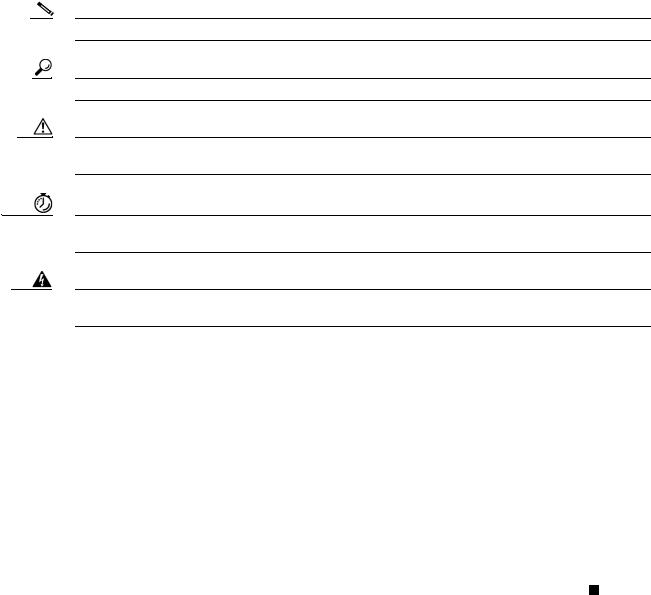Cisco 1000 User Manual

Cisco ASR 1000 Series Aggregation
Services Routers Software Configuration
Guide
May 22, 2015
Cisco Systems, Inc.
www.cisco.com
Cisco has more than 200 offices worldwide. Addresses, phone numbers, and fax numbers are listed on the Cisco website at www.cisco.com/go/offices.
Text Part Number: OL-16506-15
THE SPECIFICATIONS AND INFORMATION REGARDING THE PRODUCTS IN THIS MANUAL ARE SUBJECT TO CHANGE WITHOUT NOTICE. ALL STATEMENTS, INFORMATION, AND RECOMMENDATIONS IN THIS MANUAL ARE BELIEVED TO BE ACCURATE BUT ARE PRESENTED WITHOUT WARRANTY OF ANY KIND, EXPRESS OR IMPLIED. USERS MUST TAKE FULL RESPONSIBILITY FOR THEIR APPLICATION OF ANY PRODUCTS.
THE SOFTWARE LICENSE AND LIMITED WARRANTY FOR THE ACCOMPANYING PRODUCT ARE SET FORTH IN THE INFORMATION PACKET THAT SHIPPED WITH THE PRODUCT AND ARE INCORPORATED HEREIN BY THIS REFERENCE. IF YOU ARE UNABLE TO LOCATE THE SOFTWARE LICENSE OR LIMITED WARRANTY, CONTACT YOUR CISCO REPRESENTATIVE FOR A COPY.
The Cisco implementation of TCP header compression is an adaptation of a program developed by the University of California, Berkeley (UCB) as part of UCB’s public domain version of the UNIX operating system. All rights reserved. Copyright © 1981, Regents of the University of California.
NOTWITHSTANDING ANY OTHER WARRANTY HEREIN, ALL DOCUMENT FILES AND SOFTWARE OF THESE SUPPLIERS ARE PROVIDED “AS IS” WITH ALL FAULTS. CISCO AND THE ABOVE-NAMED SUPPLIERS DISCLAIM ALL WARRANTIES, EXPRESSED OR IMPLIED, INCLUDING, WITHOUT LIMITATION, THOSE OF MERCHANTABILITY, FITNESS FOR A PARTICULAR PURPOSE AND NONINFRINGEMENT OR ARISING FROM A COURSE OF DEALING, USAGE, OR TRADE PRACTICE.
IN NO EVENT SHALL CISCO OR ITS SUPPLIERS BE LIABLE FOR ANY INDIRECT, SPECIAL, CONSEQUENTIAL, OR INCIDENTAL DAMAGES, INCLUDING, WITHOUT LIMITATION, LOST PROFITS OR LOSS OR DAMAGE TO DATA ARISING OUT OF THE USE OR INABILITY TO USE THIS MANUAL, EVEN IF CISCO OR ITS SUPPLIERS HAVE BEEN ADVISED OF THE POSSIBILITY OF SUCH DAMAGES.
Cisco and the Cisco logo are trademarks or registered trademarks of Cisco and/or its affiliates in the U.S. and other countries. To view a list of Cisco trademarks, go to this URL: www.cisco.com/go/trademarks. Third-party trademarks mentioned are the property of their respective owners. The use of the word partner does not imply a partnership relationship between Cisco and any other company. (1110R)
Any Internet Protocol (IP) addresses and phone numbers used in this document are not intended to be actual addresses and phone numbers. Any examples, command display output, network topology diagrams, and other figures included in the document are shown for illustrative purposes only. Any use of actual IP addresses or phone numbers in illustrative content is unintentional and coincidental.
Cisco ASR 1000 Series Aggregation Services Routers Software Configuration Guide
Copyright © 2008 - 2015Cisco Systems, Inc. All rights reserved.

Preface
Revised: December 12, 2014, OL-16506-17
This preface describes the objectives and organization of this document and explains how to find additional information on related products and services. This preface contains the following sections:
•Objectives, page 1
•Document Revision History, page 2
•Organization, page 4
•Related Documentation, page 6
•Conventions, page 6
•Obtaining Documentation and Submitting a Service Request, page 7
Objectives
This document provides an overview of software functionality that is specific to the Cisco ASR 1000 Series Aggregation Services Routers. It is not intended as a comprehensive guide to all of the software features that can be run using the Cisco ASR 1000 Series Routers, but only the software aspects that are specific to these routers.
For information on general software features that are also available on the Cisco ASR 1000 Series Routers, see the Cisco IOS XE technology guide for that specific software feature.
Cisco ASR 1000 Series Aggregation Services Routers Software Configuration Guide
|
OL-16506-17 |
1 |
|
|
|

Document Revision History
The Document Revision History records technical changes to this document. The table shows the Cisco IOS XE software release number and document revision number for the change, the date of the change, and a brief summary of the change.
|
|
|
|
Release No. |
Date |
Change Summary |
|
|
|
|
|
|
|
|
|
|
|
|
|
IOS XE 3.13.1 |
December 12, 2014 |
• Added “PPP Half-Bridge on the Cisco ASR 1000 Series |
|
|
|
|
|
|
|
Routers” chapter. |
|
|
|
|
|
|
|
|
|
|
|
|
|
IOS XE 3.13 |
July 30, 2014 |
• Added new content to document IEEE 1588v2 PTP |
|
|
|
|
|
|
|
Support in the “IEEE 1588v2 PTP Support” chapter. |
|
|
|
|
|
|
|
• Added HDLC-Ethernet Interworking feature updates in |
|
|
|
|
|
|
|
the “High-Level Data Link Control-Ethernet |
|
|
|
|
|
|
|
Interworking, page 39” section of the “Configuring |
|
|
|
|
|
|
|
MPLS Layer 2 VPNs” |
|
|
|
|
|
|
|
|
|
|
|
|
|
IOS XE 3.12 |
March 28, 2014 |
• Added Multi Member-link MLPPPoA or MLPPPoEoA |
|
|
|
|
|
|
|
feature updates in the “Cisco IOS XE Scaling Limits for |
|
|
|
|
|
|
|
MLP Bundles” section of the “Multilink PPP Support |
|
|
|
|
|
|
|
for the Cisco ASR 1000 Series Routers” chapter. |
|
|
|
|
|
|
|
|
|
|
|
|
|
IOS XE 3.12 |
March 28, 2014 |
• Added Minimal Disruptive Restart Phase 3 feature |
|
|
|
|
|
|
|
updates in the “Software Upgrade Processes Supported |
|
|
|
|
|
|
|
by Cisco ASR 1000 Series Routers” chapter. |
|
|
|
|
|
|
|
|
|
|
|
|
|
IOS XE 3.12 |
March 28, 2014 |
• Added MVPNv6 support for the “MVPN MLDP over |
|
|
|
|
|
|
|
GRE” feature in the “LSM-MLDP-based MVPN |
|
|
|
|
|
|
|
Support” chapter. |
|
|
|
|
|
|
|
|
|
|
|
|
|
IOS XE 3.11.0 |
November 21, 2013 |
• Added MVPNv4 support for the “MVPN MLDP over |
|
|
|
|
|
|
|
GRE” feature in the “LSM-MLDP-based MVPN |
|
|
|
|
|
|
|
Support” chapter. |
|
|
|
|
|
|
|
|
|
|
|
|
|
IOS XE 3.10.0 |
July 30, 2013 |
• Added “Packet Trace”chapter. |
|
|
|
|
|
|
|
|
|
|
|
|
|
IOS XE 3.9.0 |
March 28, 2013 |
• Added new content to document UniDirectional Link |
|
|
|
|
|
|
|
Detection (UDLD) Protocol in the “UniDirectional |
|
|
|
|
|
|
|
Link Detection (UDLD) Protocol” chapter. |
|
|
|
|
|
|
|
|
|
|
|
|
|
IOS XE 3.8.0 |
November 28, 2012 |
• Added Minimal Disruptive Restart Process section in |
|
|
|
|
|
|
|
the “Software Upgrade Processes Supported by Cisco |
|
|
|
|
|
|
|
ASR 1000 Series Routers” chapter. |
|
|
|
|
|
|
|
|
|
|
|
|
|
IOS XE 3.7.0 |
July 25, 2012 |
• Added new content to document the Configuring Cisco |
|
|
|
|
|
|
|
Right-To-Use License in the “Configuring a Cisco |
|
|
|
|
|
|
|
Right-To-Use License” chapter. |
|
|
|
|
|
|
|
• Added new content to the Synchronous Ethernet in the |
|
|
|
|
|
|
|
“Network Synchronization Support” chapter. |
|
|
|
|
|
|
|
• Added new content to document the Walk-by User |
|
|
|
|
|
|
|
Support for PWLAN in ISG in the “Broadband |
|
|
|
|
|
|
|
Scalability and Performance” chapter. |
|
|
|
|
|
|
|
• Added new content to the bridge domain interface |
|
|
|
|
|
|
|
configurations in the “Configuring Bridge Domain |
|
|
|
|
|
|
|
Interfaces” chapter. |
|
|
|
|
|
|
|
|
|
|
|
|
Cisco ASR 1000 Series Aggregation Services Routers Software Configuration Guide |
||||
|
|
|
|||||
|
|
|
|
|
|
|
|
|
2 |
|
|
|
|
OL-16506-17 |
|
|
|
|
|
|
|
||

|
|
|
|
|
|
|
|
|
|
|
|
|
|
|
|
IOS XE 3.6.0 |
March 30, 2012 |
• Added new content to document the Cisco License Call |
|
|
|
|
Home in the “Configuring Cisco License Call Home” |
|
|
|
|
chapter. |
|
|
|
|
• Added new content to document the Frame Relay to |
|
|
|
|
ATM Bridged Interworking in the “Configuring MPLS |
|
|
|
|
Layer 2 VPNs” chapter. |
|
|
|
|
• Added new content to document the xconnect support |
|
|
|
|
on GEC (VPWS) on ASR1000 in the “Configuring |
|
|
|
|
MPLS Layer 2 VPNs” chapter. |
|
|
|
|
|
|
|
IOS XE 3.4.0S |
July 25, 2011 |
• Added new content to document the Monitoring and |
|
|
|
|
Maintaining Multilink Frame Relay feature in the |
|
|
|
|
“Monitoring and Maintaining Multilink Frame Relay” |
|
|
|
|
chapter. |
|
|
|
|
• Added new content to document In Service One-Shot |
|
|
|
|
Software Upgrade Procedure in the “Software Upgrade |
|
|
|
|
Processes Supported by Cisco ASR 1000 Series |
|
|
|
|
Routers” chapter. |
|
|
|
|
|
|
|
IOS XE 3.3.0S |
March 30, 2011 |
• Added new content to document the Scalability and |
|
|
|
|
Performance in the “Broadband Scalability and |
|
|
|
|
Performance” chapter. |
|
|
|
|
• Added software upgrade information for ASR 1001 |
|
|
|
|
chassis in the “Using Subpackages for Software |
|
|
|
|
Upgrade on a Cisco ASR 1001 Router or a Cisco ASR |
|
|
|
|
1002-X Router” section in “Software Upgrade |
|
|
|
|
Processes Supported by Cisco ASR 1000 Series |
|
|
|
|
Routers” chapter. |
|
|
|
|
|
|
|
IOS XE 3.2.0S |
November 24, 2010 |
• Added new content to document bridge domain |
|
|
|
|
interface configurations in the “Configuring Bridge |
|
|
|
|
Domain Interfaces” chapter. |
|
|
|
|
• Added new content to document the Synchronous |
|
|
|
|
Ethernet in the “Network Synchronization Support” |
|
|
|
|
chapter. |
|
|
|
|
|
|
|
IOS XE 3.1.0S |
July 30, 2010 |
• Added upgrade and file package information in the |
|
|
|
|
“Software Packaging and Architecture” chapter. |
|
|
|
|
• Added restriction regarding ISSU support in Cisco IOS |
|
|
|
|
XE Release 3.1S in “Software Upgrade Processes |
|
|
|
|
Supported by Cisco ASR 1000 Series Routers” chapter. |
|
|
|
|
|
|
|
IOS XE 2.6 |
February 26, 2010 |
• Added support for the Call Home feature in the |
|
|
|
|
“Configuring Call Home” chapter. |
|
|
|
|
• Moved the ISSU compatibility tables into the Release |
|
|
|
|
Notes for Cisco ASR 1000 Series Aggregation Services |
|
|
|
|
Routers document. |
|
|
|
|
• Relocated other ISSU compatibility information into |
|
|
|
|
the “Software Upgrade Processes Supported by Cisco |
|
|
|
|
ASR 1000 Series Routers” chapter. |
|
|
|
|
|
|
Cisco ASR 1000 Series Aggregation Services Routers Software Configuration Guide
|
OL-16506-17 |
3 |
|
|
|
|
|
|
|
|
|
|
|
|
|
|
|
|
|
|
|
|
IOS XE 2.5 |
December 15, 2009 |
Updated the “Software Upgrade Processes Supported by |
|
|
|
|
Cisco ASR 1000 Series Routers” chapter with new |
|
|
|
|
compatibility information. |
|
|
|
|
|
|
|
IOS XE 2.4 |
June 30, 2009 |
• Updated the “Software Upgrade Processes Supported |
|
|
|
|
by Cisco ASR 1000 Series Routers” chapter with new |
|
|
|
|
compatibility information. |
|
|
|
|
• Updated book with installation information for the new |
|
|
|
|
optional subpackage for the Cisco WebEx Node for |
|
|
|
|
ASR 1000 Series. |
|
|
|
|
|
|
|
IOS XE 2.3 |
February 27, 2009 |
Updated the “Software Upgrade Processes Supported by |
|
|
|
|
Cisco ASR 1000 Series Routers” chapter with new |
|
|
|
|
compatibility information. |
|
|
|
|
|
|
|
IOS XE 2.2 |
November 20, 2008 |
Updated the “Software Upgrade Processes Supported by |
|
|
|
|
Cisco ASR 1000 Series Routers” chapter with new |
|
|
|
|
compatibility information. |
|
|
|
|
|
|
|
IOS XE 2.2 |
November 3, 2008 |
Added new content to document compatibility of different |
|
|
|
|
versions of Cisco IOS XE software in the “Software |
|
|
|
|
Upgrade Processes Supported by Cisco ASR 1000 Series |
|
|
|
|
Routers” chapter. |
|
|
|
|
|
|
|
IOS XE 2.2 |
October 3, 2008 |
Updated book to document ISSU procedures for Cisco IOS |
|
|
|
|
XE Release 2.2. Removed ISSU procedures from the |
|
|
|
|
“Consolidated Packages and SubPackage Management” |
|
|
|
|
chapter of the book and created the “Software Upgrade |
|
|
|
|
Processes Supported by Cisco ASR 1000 Series Routers” |
|
|
|
|
chapter. |
|
|
|
|
|
|
|
IOS XE 2.2 |
September 23, 2008 |
Added the “Troubleshooting Software Mismatch with ESP |
|
|
|
|
Board ASR1000-ESP10-N” section for the Cisco ASR 1000 |
|
|
|
|
Embedded Services Processor 10G Non Crypto Capable |
|
|
|
|
feature. |
|
|
|
|
|
|
|
IOS XE 2.1 |
July 2, 2008 |
Added the “Configuring and Accessing the Web User |
|
|
|
|
Interface” section. |
|
|
|
|
Added Appendix “Configuration Examples”. |
|
|
|
|
|
|
|
IOS XE 2.1 |
May 2, 2008 |
First release of the book. |
|
|
|
|
|
Organization
This document contains the following chapters:
|
|
|
|
Title |
Description |
|
|
|
|
|
|
|
|
|
|
|
|
Software Packaging and Architecture |
Provides an introduction to Cisco ASR 1000 Series |
|
|
|
|
|
|
Routers software packaging, processes, and file |
|
|
|
|
|
|
systems. |
|
|
|
|
|
|
|
|
|
|
|
|
Using Cisco IOS XE Software |
Provides an introduction to accessing the |
|
|
|
|
|
|
command-line interface (CLI) and using the Cisco |
|
|
|
|
|
|
software and related tools. |
|
|
|
|
|
|
|
|
|
|
|
Cisco ASR 1000 Series Aggregation Services Routers Software Configuration Guide |
|
||
|
|
|
|
|||
|
|
|
|
|
|
|
|
4 |
|
|
|
OL-16506-17 |
|
|
|
|
|
|
||
|
|
|
|
|
|
|
|
|
|
|
|
|
|
|
|
|
|
|
|
|
|
|
|
|
|
Title |
Description |
|
|||
|
|
|
|
|
|||
|
|
Console Port, Telnet, and SSH Handling |
Provides an overview and configuration options for the |
|
|||
|
|
|
handling of incoming console port, telnet, and SSH |
|
|||
|
|
|
traffic on the Cisco ASR 1000 Series Routers. |
|
|||
|
|
|
|
|
|||
|
|
Consolidated Packages and SubPackage |
Provides information on downloading, installing, and |
|
|||
|
|
Management |
running the software on the Cisco ASR 1000 Series |
|
|||
|
|
|
Routers. |
|
|||
|
|
|
|
|
|||
|
|
Software Upgrade Process |
Provides information on ISSU compatibility and |
|
|||
|
|
|
performing limited-downtime software upgrades on the |
|
|||
|
|
|
Cisco ASR 1000 Series Routers. |
|
|||
|
|
|
|
|
|||
|
|
High Availability Overview |
Provides an overview of the High Availability |
|
|||
|
|
|
architecture, behavior, and features on the Cisco ASR |
|
|||
|
|
|
1000 Series Routers. |
|
|||
|
|
|
|
|
|||
|
|
Scalability and Performance |
Provides information on scaling and performance on |
|
|||
|
|
|
the Cisco ASR 1000 Series Routers. |
|
|||
|
|
|
|
|
|||
|
|
Cisco License Call Home |
Provides information on activating the Cisco License |
|
|||
|
|
|
for Call Home feature. |
|
|||
|
|
|
|
|
|||
|
|
Configuring Call Home for Cisco ASR 1000 |
Provides information about the Call Home feature, |
|
|||
|
|
Series Aggregation Services Routers |
which supports e-mail-based and web-based |
|
|||
|
|
|
notification of critical system events. A versatile range |
|
|||
|
|
|
of message formats are available for optimal |
|
|||
|
|
|
compatibility with pager services, standard e-mail, or |
|
|||
|
|
|
XML-based automated parsing applications. |
|
|||
|
|
|
|
|
|||
|
|
Configuring Cisco Right-To-Use License |
Provides information on activating the Cisco |
|
|||
|
|
|
Right-To-Use License. |
|
|||
|
|
|
|
|
|||
|
|
UniDirectional Link Detection (UDLD) |
Provides an overview and configuration options for the |
|
|||
|
|
Protocol |
UDLD protocol on the Cisco ASR 1000 Series Routers. |
|
|||
|
|
|
|
|
|||
|
|
Using the Management Ethernet Interface |
Provides an overview and configuration options for the |
|
|||
|
|
|
Management Ethernet interface on the Cisco ASR 1000 |
|
|||
|
|
|
Series Routers. |
|
|||
|
|
|
|
|
|||
|
|
Synchronous Ethernet Support On The Cisco |
Provides an overview and configuration options for the |
|
|||
|
|
ASR 1000 Series Routers |
Synchronous Ethernet on the Cisco ASR 1000 Series |
|
|||
|
|
|
Routers. |
|
|||
|
|
|
|
|
|||
|
|
Configuring Ethernet Over Soft GRE |
Provides an overview and configuration for the Generic |
|
|||
|
|
|
Routing Encapsulation (GRE) is a tunneling protocol |
|
|||
|
|
|
that can encapsulate a wide variety of network layer |
|
|||
|
|
|
protocols inside virtual point-to-point links over an IP |
|
|||
|
|
|
internetwork. |
|
|||
|
|
|
|
|
|||
|
|
Configuring Bridge Domain Interfaces |
Provides an overview of configuration options for the |
|
|||
|
|
|
Bridge Domain Interface on the Cisco ASR 1000 Series |
|
|||
|
|
|
Routers. |
|
|||
|
|
|
|
|
|||
|
|
Monitoring and Maintaining Multilink Frame |
Provides an overview of monitoring and maintaining |
|
|||
|
|
Relay |
the Multilink Frame Relay feature for the Cisco ASR |
|
|||
|
|
|
1000 Series Routers. |
|
|||
|
|
|
|
|
|||
|
|
Configuring MPLS Layer 2 VPNs |
Provides an overview of the Frame Relay to ATM |
|
|||
|
|
|
Bridged Interworking feature. |
|
|||
|
|
|
|
|
|
|
|
|
|
Cisco ASR 1000 Series Aggregation Services Routers Software Configuration Guide |
|
|
|
|
|
|
|
||||||
|
|
|
|
|
|
|
|
|
OL-16506-17 |
|
|
5 |
|
|
|
|
|
|
|
||||

|
|
|
|
|
|
|
|
|
|
|
|
|
|
|
|
|
Title |
Description |
|
|
|
|
|
|
|
|
LSM-MLDP-based MVPN Support |
Provides information on the Label Switched Multicast |
|
|
|
|
(LSM) feature supports IPv4 and IPv6 multicast traffic |
|
|
|
|
over a Multi-Protocol Label Switching (MPLS) |
|
|
|
|
network. |
|
|
|
|
|
|
|
|
Tracing and Trace Management |
Provides an overview of tracing on the Cisco ASR 1000 |
|
|
|
|
Series Router, and how to manage the tracing process |
|
|
|
|
and files. |
|
|
|
|
|
|
|
|
PPP Half-Bridge on the Cisco ASR 1000 |
Provides information about PPP half-bridge on the |
|
|
|
Series Routers |
Cisco ASR 1000 Series Routers. |
|
|
|
|
|
|
|
|
Configuring and Accessing the Web User |
Provides an overview of the Cisco ASR 1000 Series |
|
|
|
Interface |
Router web user interface, and information on |
|
|
|
|
configuring and accessing the web user interface. |
|
|
|
|
|
|
Related Documentation
This section refers you to other documentation that also might be useful as you configure your Cisco ASR 1000 Series Router. The documentation listed below is available online.
Cisco ASR 1000 Series Routers Documentation
The Cisco ASR 1000 Series has a documentation roadmap that provides listings to a broad range of documentation available for the Cisco ASR 1000 Series Routers. See the Cisco ASR 1000 Series Router Documentation Roadmap at:
http://cisco.com/en/US/products/ps9343/products_documentation_roadmaps_list.html
The documentation homepage for the Cisco ASR 1000 Series Routers contains a wide variety of hardware and software information for the Cisco ASR 1000 Series Routers and can be viewed at:
http://cisco.com/en/US/products/ps9343/tsd_products_support_series_home.html
The documentation homepage for Cisco IOS XE contains Cisco IOS XE technology guides and feature documentation and can be viewed at:
http://cisco.com/en/US/products/ps9587/tsd_products_support_series_home.html
For information on commands, see one of the following resources:
•Cisco IOS XE Software Command References
•Command Lookup Tool (cisco.com login required)
Conventions
This document uses the following conventions:
Convention |
Indication |
|
|
bold font |
Commands and keywords and user-entered text appear in bold font. |
|
|
Cisco ASR 1000 Series Aggregation Services Routers Software Configuration Guide
6 |
OL-16506-17 |
|
|

|
|
|
|
|
|
|
|
|
|
|
|
|
|
|
|
italic font |
Document titles, new or emphasized terms, and arguments for which you supply |
||
|
|
|
values are in italic font. |
|
|
|
|
|
|
[ |
] |
Elements in square brackets are optional. |
||
|
|
|
||
|
{x | y | z } |
Required alternative keywords are grouped in braces and separated by |
||
|
|
|
vertical bars. |
|
|
|
|
||
|
[ x | y | z ] |
Optional alternative keywords are grouped in brackets and separated by |
||
|
|
|
vertical bars. |
|
|
|
|
||
|
string |
A nonquoted set of characters. Do not use quotation marks around the string or |
||
|
|
|
the string will include the quotation marks. |
|
|
|
|
||
|
courier font |
Terminal sessions and information the system displays appear in courier font. |
||
|
|
|
|
|
< |
> |
Nonprinting characters such as passwords are in angle brackets. |
||
|
|
|
|
|
[ |
] |
Default responses to system prompts are in square brackets. |
||
|
|
|
||
!, # |
An exclamation point (!) or a pound sign (#) at the beginning of a line of code |
|||
|
|
|
indicates a comment line. |
|
|
|
|
|
|
Note Means reader take note.
Tip Means the following information will help you solve a problem.
Caution Means reader be careful. In this situation, you might perform an action that could result in equipment damage or loss of data.
Timesaver Means the described action saves time. You can save time by performing the action described in the paragraph.
Warning Means reader be warned. In this situation, you might perform an action that could result in bodily injury.
Obtaining Documentation and Submitting a Service Request
For information on obtaining documentation, submitting a service request, and gathering additional information, see the monthly What’s New in Cisco Product Documentation, which also lists all new and revised Cisco technical documentation, at:
http://www.cisco.com/en/US/docs/general/whatsnew/whatsnew.html
Subscribe to the What’s New in Cisco Product Documentation as a Really Simple Syndication (RSS) feed and set content to be delivered directly to your desktop using a reader application. The RSS feeds are a free service and Cisco currently supports RSS version 2.0.
Cisco ASR 1000 Series Aggregation Services Routers Software Configuration Guide
|
OL-16506-17 |
7 |
|
|
|

Cisco ASR 1000 Series Aggregation Services Routers Software Configuration Guide
8 |
OL-16506-17 |
|
|

C H A P T E R 1
Software Packaging and Architecture
The Cisco ASR 1000 Series Aggregation Services Routers introduce a new software packaging model and architecture.
This chapter discusses this new packaging and architecture and contains the following sections:
•Software Packaging on the Cisco ASR 1000 Series Routers, page 1-1
•Processes Overview, page 1-6
•File Systems on the Cisco ASR 1000 Series Router, page 1-8
•Autogenerated File Directories and Files, page 1-9
Software Packaging on the Cisco ASR 1000 Series Routers
This section covers the following topics:
•ASR 1000 Series Routers Software Overview, page 1-1
•Consolidated Packages, page 1-2
•Individual Software SubPackages Within a Consolidated Package, page 1-3
•Optional Software SubPackages Outside of Consolidated Packages, page 1-4
•Provisioning Files, page 1-4
•ROMmon Image, page 1-5
•File to Upgrade Field Programmable Hardware Devices, page 1-5
ASR 1000 Series Routers Software Overview
The Cisco ASR 1000 Series Routers run using Cisco IOS XE software. Cisco IOS XE is released using consolidated packages and optional subpackages.
Each consolidated package contains a collection of software subpackages. Each software subpackage is an individual software file that controls a different element or elements of the Cisco ASR 1000 Series Router. Each individual software subpackage can be upgraded individually, or all software subpackages for a specific consolidated package can be upgraded as part of a complete consolidated package upgrade. Importantly, IOS (the RPIOS subpackage) is considered one of the seven individual subpackages that makes up a complete consolidated package. For additional information on individual software subpackages, see the “Consolidated Packages” section on page 1-2.
Cisco ASR 1000 Series Aggregation Services Routers Software Configuration Guide
|
OL-16506-15 |
1-1 |
|
|
|

Chapter 1 Software Packaging and Architecture
Software Packaging on the Cisco ASR 1000 Series Routers
A collection of software subpackages packaged together creates a single consolidated package. A consolidated package allows users to upgrade all individual subpackages on the router with a single software image download. Consolidated packages can be downloaded from Cisco.com; users who want to run the router using individual subpackages that are part of the consolidated package must first download the image from Cisco.com and extract the individual subpackages from the image, which can be done by entering request platform command-line interface commands.
Beginning in Cisco IOS XE Release 2.4, support for a supplemental, optional subpackage of type called sipspawma is introduced to support the Cisco WebEx Node for ASR 1000 Series shared port adapter (SPA). Optional subpackages are installed similarly to individual subpackages; however, optional subpackages are not bundled as part of a consolidated package like prior support for the individual subpackages, and optional subpackages must be downloaded independently.
See the “Consolidated Packages” section on page 2 and “Individual Software SubPackages Within a Consolidated Package” section on page 1-3 of this book for additional information on extracting individual subpackages from a consolidated package, supplemental optional subpackages, and other information on managing software.
Consolidated Packages
A consolidated package is a single image composed of individual software subpackage files. A single consolidated package file is a bootable file, and the Cisco ASR 1000 Series Router can be run using the consolidated package.
Note Consolidated packages only contain the required individual subpackage files. These packages do not contain supplemental, optional subpackages, such as the “sipspawma” package for the Cisco WebEx Node for ASR 1000 Series.
Each consolidated package also contains a provisioning file. A provisioning file is used for booting in cases where the individual subpackages are extracted from the consolidated package, or optional subpackages are used to run the router. For additional information on the advantages and disadvantages of running a complete consolidated package, see the “Running the Cisco ASR 1000 Series Routers: An Overview” section on page 4-1. For additional information on provisioning files, see the “Provisioning Files” section on page 1-4.
For information about the consolidated packages available in a specific version of Cisco IOS XE, see the release notes for that version of Cisco IOS XE. The Cisco IOS XE Software Release Notes contains the release notes for each version of Cisco IOS XE.
Important Information About Consolidated Packages
The important information about consolidated packages include:
•For each version of a consolidated package, the RPBase, RPControl, ESPBase, SIPSPA, and SIPBase subpackages are identical among consolidated packages.
•For each version of consolidated package, the RPIOS subpackage is always different among consolidated packages.
•A consolidated package file is a bootable file. If the router is configured to run using a the complete consolidated package, boot the router using the consolidated package file. If the router is configured to run using individual subpackages, boot the router using the provisioning file. For additional information on the advantages and disadvantages of running a complete consolidated package, see the “Running the Cisco ASR 1000 Series Routers: An Overview” section on page 4-1. For additional
Cisco ASR 1000 Series Aggregation Services Routers Software Configuration Guide
1-2 |
OL-16506-15 |
|
|

Chapter 1 Software Packaging and Architecture
Software Packaging on the Cisco ASR 1000 Series Routers
information on provisioning files, see the “Provisioning Files” section on page 1-4.
•If you need to install optional subpackages, then you must boot the router using the individual subpackage provisioning file method.
Individual Software SubPackages Within a Consolidated Package
provides an overview of the Cisco ASR 1000 Series Routers subpackages and the purpose of each individual subpackage. Every consolidated package will have all of these individual subpackages. To see additional information about each individual subpackages in a particular Cisco IOS XE release, see
Cisco IOS XE Release Notes for that release.
Table 1-1 |
Individual SubPackages |
|
|
|
|
SubPackage |
|
Purpose |
|
|
|
RPBase |
|
Provides the operating system software for the Route Processor. |
|
|
|
RPControl |
|
Controls the control plane processes that interface between the IOS |
|
|
process and the rest of the platform. |
|
|
|
RPAccess |
|
Exports processing of restricted components, such as Secure Socket |
|
|
Layer (SSL), Secure Shell (SSH), and other security features. |
|
|
|
RPIOS |
|
Provides the Cisco IOS kernel, which is where IOS features are stored |
|
|
and run. |
|
|
Each consolidated package has a different RPIOS. |
|
|
|
ESPBase |
|
Provides the ESP operating system and control processes, and the |
|
|
ESP software. |
|
|
|
SIPBase |
|
Controls the SIP operating system and control processes. |
|
|
|
SIPSPA |
|
Provides the SPA driver and Field Programmable Device (FPD) |
|
|
images. |
|
|
|
Important Notes About Individual SubPackages
The important information about individual subpackage include:
•Individual subpackages cannot be downloaded from Cisco.com individually. To get these individual subpackages, users must download a consolidated package and then extract the individual subpackages from the consolidated package using the command-line interface.
•If the router is being run using individual subpackages instead of being run using a complete consolidated package, the router must be booted using a provisioning file. A provisioning file is included in all consolidated packages and is extracted from the image along with the individual subpackages whenever individual subpackages are extracted. For additional information on provisioning files, see the “Provisioning Files” section on page 1-4.
Optional Software SubPackages Outside of Consolidated Packages
Beginning in Cisco IOS XE Release 2.4, the ASR 1000 Series Routers support a new type of subpackage—this is an optional software subpackage that is available as a separate, external package that is downloaded and installed along with the other required subpackages.
Cisco ASR 1000 Series Aggregation Services Routers Software Configuration Guide
|
OL-16506-15 |
1-3 |
|
|
|

Chapter 1 Software Packaging and Architecture
Software Packaging on the Cisco ASR 1000 Series Routers
sipspawmak9 is an optional subpackage that provides the system software for the Cisco WebEx Node for ASR 1000 Series Routers.
Important Notes About Optional SubPackages
The important information about optional subpackages include:
•Optional subpackages are downloaded separately from consolidated package files. Optional subpackages are not contained within a consolidated package for a release.
•Optional package installation works similarly to the installation of individual subpackages using a provisioning file.
•Optional subpackages can be uninstalled to remove provisioning when the package no longer applies to an RP.
•Optional subpackages are easily supported by the standard ISSU upgrade process as long as the package is located in the directory of the provisioning file for each RP.
Provisioning Files
Note You must use the provisioning files to manage the boot process if you need to install optional subpackages.
Provisioning files manage the boot process when the Cisco ASR 1000 Series Router is configured to run using individual subpackages or optional subpackages (such as the package for the Cisco WebEx Node for ASR 1000 Series). When individual subpackages are being used to run the Cisco ASR 1000 Series Router, the router has to be configured to boot the provisioning file. The provisioning file manages the bootup of each individual subpackage and the Cisco ASR 1000 Series Router assumes normal operation.
Provisioning files are extracted automatically when individual subpackage files are extracted from a consolidated package.
Provisioning files are not necessary for running the router using the complete consolidated package; if you want to run the router using the complete consolidated package, simply boot the router using the consolidated package file.
See the “Running the Cisco ASR 1000 Series Routers: An Overview” section on page 4-1 for additional information on the advantages and disadvantages of running individual subpackages versus running a complete consolidated package.
Cisco ASR 1000 Series Aggregation Services Routers Software Configuration Guide
1-4 |
OL-16506-15 |
|
|

Chapter 1 Software Packaging and Architecture
Software Packaging on the Cisco ASR 1000 Series Routers
Important Notes About Provisioning Files
The important information about provisioning files include:
•Each consolidated package contains two provisioning files. One of the provisioning files is always named “packages.conf”, while the other provisioning file will have a name based on the consolidated package naming structure. In any consolidated package, both provisioning files perform the exact same function.
•In most cases, the “packages.conf” provisioning file should be used to boot the router. Configuring the router to boot using this file is generally easier because the router can be configured to boot using “packages.conf”, so no changes have to be made to the boot statement when Cisco IOS XE is upgraded (the boot system file-system:packages.conf configuration command can remain unmodified before and after an upgrade).
•The provisioning file and individual subpackage files must be kept in the same directory. The provisioning file does not work properly if the individual subpackage files are in other directories.
•The provisioning filename can be renamed; the individual subpackage filenames cannot be renamed.
•After placing the provisioning file and the individual subpackage files in a directory and booting the router, it is highly advisable not to rename, delete, or alter any of these files. Renaming, deleting, or altering the files can lead to unpredictable router problems and behaviors.
ROMmon Image
An independent ROMmon image is released periodically separate from consolidated packages or any other software releases.
See the documentation that accompanies the ROMmon image for information on each ROMmon image. For additional information on ROMmon, see the Cisco ASR 1000 Series Routers Maintain and Operate Guide.
File to Upgrade Field Programmable Hardware Devices
Starting in Cisco IOS XE Release 3.1.0S, a hardware programmable package file used to upgrade field programmable hardware devices is released as needed. A package file is provided for the field programmable device to customers in cases where a field upgrade is required. If the Cisco ASR 1000 Series Router contains an incompatible version of the hardware programmable firmware on the Cisco ASR1000-RP, Cisco ASR1000-SIP, or Cisco ASR1000-ESP, then that firmware may need to be upgraded.
Generally an upgrade is only necessary in cases where a system message indicates one of the field programmable devices on the Cisco ASR 1000 Series Router needs an upgrade or a Cisco technical support representative suggests an upgrade.
In Cisco IOS XE Release 3.1.0S, a package file that contains a new version of the Complex Programmable Logic Device (CPLD) code is available for users who need to upgrade old versions of firmware on a Cisco ASR1000-RP2 or Cisco ASR1000-SIP10 in a Cisco ASR 1013 Router.
For more information on upgrading field programmable hardware devices, see the Upgrading Field Programmable Hardware Devices for Cisco ASR 1000 Series Routers document.
Cisco ASR 1000 Series Aggregation Services Routers Software Configuration Guide
|
OL-16506-15 |
1-5 |
|
|
|

Chapter 1 Software Packaging and Architecture
Processes Overview
Processes Overview
Cisco IOS XE has numerous components that run entirely as separate processes on the Cisco ASR 1000 Series Routers. This modular architecture increases network resiliency by distributing operating responsibility among separate processes rather than relying on Cisco IOS software for all operations.
This section covers the following topics:
•IOS as a Process, page 1-7
•Dual IOS Processes, page 1-8
Table 1-2 provides a list of the important individual processes for the Cisco ASR 1000 Series Routers. These processes run in the background, and the CLI on Cisco ASR 1000 Series Routers using Cisco IOS-XE is identical in look, feel, and usage to the Cisco IOS CLI on most platforms. This information is provided because it may be useful for checking router state and troubleshooting, but understanding this information is not essential to understanding most router operations.
Table 1-2 |
Individual Processes |
|
|
|
|
|
|
|
|
|
|
|
|
SubPackage |
Process |
|
Purpose |
Affected FRUs |
Mapping |
|
|
|
|
|
Chassis Manager |
Responsible for all chassis |
RP (one instance per |
RPControl |
|
|
|
management functions, |
RP) |
|
|
|
including management of the |
SIP (one instance per |
SIPBase |
|
|
HA state, environmental |
SIP) |
|
|
|
monitoring, and FRU state |
ESP (one instance per |
ESPBase |
|
|
control. |
ESP) |
|
|
|
|
|
|
Host Manager |
|
Provides an interface between |
RP (one instance per |
RPControl |
|
|
the IOS process and many of |
RP) |
|
|
|
the information-gathering |
SIP (one instance per |
SIPBase |
|
|
functions of the underlying |
SIP) |
|
|
|
platform kernel and operating |
ESP (one instance per |
ESPBase |
|
|
system. |
ESP) |
|
|
|
|
|
|
Logger |
|
Provides IOS facing logging |
RP (one instance per |
RPControl |
|
|
services to processes running |
RP) |
|
|
|
on each FRU. |
SIP (one instance per |
SIPBase |
|
|
|
SIP) |
|
|
|
|
ESP (one instance per |
ESPBase |
|
|
|
ESP) |
|
|
|
|
|
|
Interface Manager |
Provides an interface between |
RP (one instance per |
RPControl |
|
|
|
the IOS process and the |
RP) |
|
|
|
per-SPA interface processes on |
SIP (one instance per |
SIPBase |
|
|
the SIP. |
SIP) |
|
|
|
|
|
|
IOS |
|
The IOS process implements |
RP (one per software |
RPIOS |
|
|
all forwarding and routing |
redundancy instance per |
|
|
|
features for the router. |
RP). Maximum of two |
|
|
|
|
instances per RP. |
|
|
|
|
|
|
Cisco ASR 1000 Series Aggregation Services Routers Software Configuration Guide
1-6 |
OL-16506-15 |
|
|

Chapter 1 Software Packaging and Architecture
Processes Overview
Table 1-2 |
Individual Processes (continued) |
|
|
|
|
|
|
|
|
|
|
|
|
SubPackage |
Process |
|
Purpose |
Affected FRUs |
Mapping |
|
|
|
|
|
Forwarding Manager |
Manages the downloading of |
RP (one per software |
RPControl |
|
|
|
configuration to each of the |
redundancy instance per |
|
|
|
ESPs and the communication |
RP). Maximum of two |
|
|
|
of forwarding plane |
instances per RP. |
ESPBase |
|
|
information, such as statistics, |
ESP (one per ESP) |
|
|
|
to the IOS process. |
|
|
|
|
|
|
|
Pluggable Services |
The integration point between |
RP (one per software |
RPControl |
|
|
|
platform policy application, |
redundancy instance per |
|
|
|
such as authentication and the |
RP). Maximum of two |
|
|
|
IOS process. |
instances per RP. |
|
|
|
|
|
|
Shell Manager |
|
Provides all user interface |
RP (one instance per |
RPControl |
|
|
features and handling related |
RP) |
|
|
|
to features in the nonIOS |
|
|
|
|
image of the consolidated |
|
|
|
|
package, which are also the |
|
|
|
|
features available in diagnostic |
|
|
|
|
mode when the IOS process |
|
|
|
|
fails. |
|
|
|
|
|
|
|
SPA driver process |
Provides an isolated process |
SPA (one instance per |
SIPSPA |
|
|
|
driver for a specific SPA. |
SPA per SIP) |
|
|
|
|
|
|
CPP driver process |
Manages the CPP hardware |
ESP (one instance per |
ESPBase |
|
|
|
forwarding engine on the ESP. |
ESP) |
|
|
|
|
|
|
CPP HA process |
Manages HA state for the CPP |
ESP (one instance per |
ESPBase |
|
|
|
hardware forwarding engine. |
ESP) |
|
|
|
|
|
|
CPP SP process |
|
Performs high-latency tasks |
ESP (one instance per |
ESPBase |
|
|
for the CPP-facing |
ESP) |
|
|
|
functionality in the ESP |
|
|
|
|
instance of the Forwarding |
|
|
|
|
Manager process. |
|
|
|
|
|
|
|
IOS as a Process
In almost all previous Cisco router platforms, an overwhelming majority of the internal software processes are run using Cisco IOS memory.
The Cisco ASR 1000 Series Routers introduce a distributed software architecture that moves many operating system responsibilities out of the IOS process. In this architecture, IOS, which previously was responsible for almost all of the internal software processes, now runs as one of many Linux processes while allowing other Linux processes to share responsibility for running the router.
This architecture allows for better allocation of memory so the router can run more efficiently. Furthermore, the Cisco ASR 1000 Series Routers has a command-line interface in diagnostic mode that can be accessed in certain scenarios even if the IOS process fails. See the “Understanding the Diagnostic Mode” section on page 2-7 for information on diagnostic mode.
Cisco ASR 1000 Series Aggregation Services Routers Software Configuration Guide
|
OL-16506-15 |
1-7 |
|
|
|

Chapter 1 Software Packaging and Architecture
Processes Overview
Dual IOS Processes
The Cisco ASR 1000 Series Router introduces a dual IOS process model that allows for increased high availability at all times.
Using SSO or RPR, a second IOS process can be enabled on a Cisco ASR 1002 or 1004 Router. On Cisco ASR 1000 Series Routers configured with dual Route Processors, the second IOS process runs on the standby Route Processor.
The state of these dual IOS processes can be checked by entering the show platform command.
The advantages of a second IOS process includes:
•Increased fault tolerance—In the event of an active IOS failure, the second IOS process immediately becomes the active IOS process with little to no service disruption.
•No downtime software upgrades—IOS and other software on the router can be upgraded using the In Service Software Upgrade (ISSU) feature in the standby IOS process, thereby allowing the network to remain active during the software upgrade. See the “Router#” section on page 4-20 for additional information on when ISSU can and cannot be used to perform no downtime software upgrades.
File Systems on the Cisco ASR 1000 Series Router
Table 1-3 provides a list of file systems that can be seen on the Cisco ASR 1000 Series Routers.
Table 1-3 |
File Systems |
|
|
|
|
File System |
|
Description |
|
|
|
bootflash: |
|
The boot flash memory file system on the active RP. |
|
|
|
cns: |
|
The Cisco Networking Services file directory. |
|
|
|
harddisk: |
|
The hard disk file system on the active RP. |
|
|
The harddisk: file system is not available on the Cisco ASR 1002 Routers. |
|
|
|
nvram: |
|
Router NVRAM. You can copy the startup configuration to NVRAM or from |
|
|
NVRAM. |
|
|
|
obfl: |
|
The file system for Onboard Failure Logging files. |
|
|
|
stby-bootflash: |
|
The boot flash memory file system on the standby RP. |
|
|
|
stby-harddisk: |
|
The hard disk file system on the standby RP. |
|
|
The harddisk: file system is not available on the Cisco ASR 1002 Routers. |
|
|
|
stby-usb[0-1]: |
|
The Universal Serial Bus (USB) flash drive file systems on the standby RP. |
|
|
The stby-usb: file system is not available on the Cisco ASR 1002 Routers. |
|
|
|
system: |
|
The system memory file system, which includes the running configuration. |
|
|
|
tar: |
|
The archive file system. |
|
|
|
tmpsys: |
|
The temporary system files file system. |
|
|
|
usb[0-1]: |
|
The Universal Serial Bus (USB) flash drive file systems on the active RP. |
|
|
Only usb0: is available on the Cisco ASR 1002 Router. |
|
|
|
Cisco ASR 1000 Series Aggregation Services Routers Software Configuration Guide
1-8 |
OL-16506-15 |
|
|

Chapter 1 Software Packaging and Architecture
Processes Overview
If you run into a file system not listed in Table 1-3, enter the? help option or see the copy command reference for additional information on that file system.
Autogenerated File Directories and Files
This section discusses the autogenerated files and directories that might appear on your Cisco ASR 1000 Series Routers, and how the files in these directories can be managed.
Table 1-4 provides a list and descriptions of autogenerated files on the Cisco ASR 1000 Series Routers.
Table 1-4 Autogenerated Files
File or Directory |
Description |
crashinfo files |
A crashinfo file may appear in the bootflash: or harddisk: file system. |
|
These files provide descriptive information of a crash and may be useful for |
|
tuning or troubleshooting purposes, but the files are not part of router |
|
operations and can be erased without impacting the functioning of the router. |
|
|
core directory |
The storage area for.core files. |
|
If this directory is erased, it will automatically regenerate itself at bootup. The |
|
.core files in this directory can be erased without impacting any router |
|
functionality, but the directory itself should not be erased. |
lost+found directory This directory is created on bootup if a system check is performed. Its appearance is completely normal and does not indicate any issues with the router.
tracelogs directory The storage area for trace files.
Trace files are useful for troubleshooting; if the IOS process fails, for instance, users or troubleshooting personnel can access trace files using diagnostic mode to gather information related to the IOS failure.
Trace files, however, are not part of router operations and can be erased without impacting the router’s performance.
Important Notes About Autogenerated Directories
The important information about autogenerated directories include:
•Any autogenerated file on the bootflash: directory should not be deleted, renamed, moved, or altered in any way unless directed by customer support. Altering autogenerating files on the bootflash: can have unpredictable consequences for system performance.
•Crashinfo, core, and trace files can be deleted, but the core and tracelog directories that are automatically part of the harddisk: file system should not be deleted.
Cisco ASR 1000 Series Aggregation Services Routers Software Configuration Guide
|
OL-16506-15 |
1-9 |
|
|
|

Chapter 1 Software Packaging and Architecture
Processes Overview
|
Cisco ASR 1000 Series Aggregation Services Routers Software Configuration Guide |
1-10 |
OL-16506-15 |

C H A P T E R 2
Using Cisco IOS XE Software
This chapter provides information to prepare you to configure the Cisco ASR 100Series Routers:
•Accessing the CLI Using a Router Console, page 2-1
•Using the Auxiliary Port, page 2-4
•Using Keyboard Shortcuts, page 2-5
•Using the History Buffer to Recall Commands, page 2-5
•Understanding the Command Mode, page 2-6
•Understanding the Diagnostic Mode, page 2-7
•Getting Help, page 2-8
•Using the no and default Forms of Commands, page 2-11
•Saving Configuration Changes, page 2-11
•Managing Configuration Files, page 2-11
•Filtering the Output of the show and more Commands, page 2-13
•Powering Off a Router, page 2-14
•Finding Support Information for Platforms and Cisco Software Images, page 2-14
Accessing the CLI Using a Router Console
The following sections describe how to access the command-line interface (CLI) using a directly-connected console or by using Telnet or a modem to obtain a remote console:
•Accessing the CLI Using a Directly-Connected Console, page 2-2
•Accessing the CLI from a Remote Console Using Telnet, page 2-3
•Accessing the CLI from a Remote Console Using a Modem, page 2-4
Cisco ASR 1000 Series Aggregation Services Routers Software Configuration Guide
|
OL-16506-17 |
2-1 |
|
|
|

Chapter 2
Accessing the CLI Using a Router Console
Accessing the CLI Using a Directly-Connected Console
This section describes how to connect to the console port on the router and use the console interface to access the CLI.
The console port on a Cisco ASR 1000 Series Router is an EIA/TIA-232 asynchronous, serial connection with no flow control and an RJ-45 connector. The console port is located on the front panel of each Route Processor (RP).
Connecting to the Console Port
To connect to the console port, complete the following steps:
Step 1 Configure your terminal emulation software with the following settings:
•9600 bits per second (bps)
•8 data bits
•No parity
•1 stop bit
•No flow control
Step 2 Connect to the port using the RJ-45-to-RJ-45 cable and RJ-45-to-DB-25 DTE adapter or using the RJ-45-to-DB-9 DTE adapter (labeled “Terminal”).
Using the Console Interface
Every RP on a Cisco ASR 1000 Series Router has a console interface. Notably, a standby RP can be accessed using the console port in addition to the active RP in a dual RP configuration.
To access the CLI using the console interface, complete the following steps:
Step 1 After you attach the terminal hardware to the console port on the router and you configure your terminal emulation software with the proper settings, the following prompt appears:
Press RETURN to get started.
Step 2 Press Return to enter user EXEC mode. The following prompt appears:
Router>
Step 3 From user EXEC mode, enter the enable command as shown in the following example:
Router> enable
Step 4 At the password prompt, enter your system password. If an enable password has not been set on your system, this step may be skipped.
The following example shows entry of the password enablepass:
Password: enablepass
Step 5 When your enable password is accepted, the privileged EXEC mode prompt appears:
Router#
Cisco ASR 1000 Series Aggregation Services Routers Software Configuration Guide
2-2 |
OL-16506-17 |
|
|

Chapter 2
Accessing the CLI Using a Router Console
Step 6 You now have access to the CLI in privileged EXEC mode and you can enter the necessary commands to complete your desired tasks.
Step 7 To exit the console session, enter the quit command as shown in the following example:
Router# quit
Accessing the CLI from a Remote Console Using Telnet
This section describes how to connect to the console interface on a router using Telnet to access the CLI.
Preparing to Connect to the Router Console Using Telnet
Before you can access the router remotely using Telnet from a TCP/IP network, you need to configure the router to support virtual terminal lines (vtys) using the line vty global configuration command. You also should configure the vtys to require login and specify a password.
Note To prevent disabling login on the line, be careful that you specify a password with the password command when you configure the login line configuration command. If you are using authentication, authorization, and accounting (AAA), you should configure the login authentication line configuration command. To prevent disabling login on the line for AAA authentication when you configure a list with the login authentication command, you must also configure that list using the aaa authentication login global configuration command. For more information about AAA services, see the Cisco IOS XE Security Configuration Guide, and the Cisco IOS Security Command Reference Guide.
In addition, before you can make a Telnet connection to the router, you must have a valid host name for the router or have an IP address configured on the router. For more information about requirements for connecting to the router using Telnet, information about customizing your Telnet services, and using Telnet key sequences, see the Cisco IOS Configuration Fundamentals Configuration Guide.
Using Telnet to Access a Console Interface
To access a console interface using Telnet, complete the following steps:
Step 1 From your terminal or PC, enter one of the following commands:
•connect host [port] [keyword]
•telnet host [port] [keyword]
In this syntax, host is the router hostname or an IP address, port is a decimal port number (23 is the default), and keyword is a supported keyword. For more information, see the Cisco IOS Configuration Fundamentals Command Reference Guide.
Note If you are using an access server, then you will need to specify a valid port number such as telnet 172.20.52.40 2004, in addition to the hostname or IP address.
The following example shows the telnet command to connect to the router named router:
unix_host% telnet router
Cisco ASR 1000 Series Aggregation Services Routers Software Configuration Guide
|
OL-16506-17 |
2-3 |
|
|
|

Chapter 2
Using the Auxiliary Port
Trying 172.20.52.40...
Connected to 172.20.52.40. Escape character is '^]'. unix_host% connect
Step 2 At the password prompt, enter your login password. The following example shows entry of the password mypass:
User Access Verification
Password: mypass
Note If no password has been configured, press Return.
Step 3 From user EXEC mode, enter the enable command as shown in the following example:
Router> enable
Step 4 At the password prompt, enter your system password. The following example shows entry of the password enablepass:
Password: enablepass
Step 5 When the enable password is accepted, the privileged EXEC mode prompt appears:
Router#
Step 6 You now have access to the CLI in privileged EXEC mode and you can enter the necessary commands to complete your desired tasks.
Step 7 To exit the Telnet session, use the exit or logout command as shown in the following example:
Router# logout
Accessing the CLI from a Remote Console Using a Modem
To access the router remotely using a modem through an asynchronous connection, connect the modem to the console port.
The console port on a Cisco ASR 1000 Series Aggregation Services Router is an EIA/TIA-232 asynchronous, serial connection with no flow control and an RJ-45 connector. The console port is located on the front panel of the RP.
To connect a modem to the console port, place the console port mode switch in the in position. Connect to the port using the RJ-45-to-RJ-45 cable and the RJ-45-to-DB-25 DCE adapter (labeled “Modem”).
Using the Auxiliary Port
The auxiliary port on the Route Processor does not serve any useful purpose for customers.
This port should only be accessed under the advisement of a customer support representative.
Cisco ASR 1000 Series Aggregation Services Routers Software Configuration Guide
2-4 |
OL-16506-17 |
|
|

Chapter 2
Using Keyboard Shortcuts
Using Keyboard Shortcuts
Commands are not case sensitive. You can abbreviate commands and parameters if the abbreviations contain enough letters to be different from any other currently available commands or parameters.
Table 2-1 lists the keyboard shortcuts for entering and editing commands.
Table 2-1 |
Keyboard Shortcuts |
|
|
|
|
Keystrokes |
|
Purpose |
|
|
|
Ctrl-B or |
|
Move the cursor back one character |
the Left Arrow key1 |
|
|
Ctrl-F or |
|
Move the cursor forward one character |
the Right Arrow key1 |
|
|
|
|
|
Ctrl-A |
|
Move the cursor to the beginning of the command line |
|
|
|
Ctrl-E |
|
Move the cursor to the end of the command line |
|
|
|
Esc B |
|
Move the cursor back one word |
|
|
|
Esc F |
|
Move the cursor forward one word |
|
|
|
1. The arrow keys function only on ANSI-compatible terminals such as VT100s.
Using the History Buffer to Recall Commands
The history buffer stores the last 20 commands you entered. History substitution allows you to access these commands without retyping them, by using special abbreviated commands.
Table 2-2 lists the history substitution commands.
Table 2-2 |
History Substitution Commands |
|
|
|
|
Command |
|
Purpose |
|
|
|
Ctrl-P or the Up Arrow key1 |
Recall commands in the history buffer, beginning with the most |
|
|
|
recent command. Repeat the key sequence to recall successively |
|
|
older commands. |
|
|
|
Ctrl-N or the Down Arrow key1 |
Return to more recent commands in the history buffer after |
|
|
|
recalling commands with Ctrl-P or the Up Arrow key. |
|
|
|
Router# show history |
While in EXEC mode, list the last several commands you have just |
|
|
|
entered. |
|
|
|
1. The arrow keys function only on ANSI-compatible terminals such as VT100s.
Cisco ASR 1000 Series Aggregation Services Routers Software Configuration Guide
|
OL-16506-17 |
2-5 |
|
|
|

Chapter 2
Understanding the Command Mode
Understanding the Command Mode
The command modes available in the traditional Cisco IOS CLI are exactly the same as the command modes available in Cisco IOS XE.
You use the CLI to access Cisco IOS XE software. Because the CLI is divided into many different modes, the commands available to you at any given time depend on the mode that you are currently in. Entering a question mark (?) at the CLI prompt allows you to obtain a list of commands available for each command mode.
When you log in to the CLI, you are in user EXEC mode. User EXEC mode contains only a limited subset of commands. To have access to all commands, you must enter privileged EXEC mode, normally by using a password. From privileged EXEC mode, you can issue any EXEC command—user or privileged mode—or you can enter global configuration mode. Most EXEC commands are one-time commands. For example, show commands show important status information, and clear commands clear counters or interfaces. The EXEC commands are not saved when the software reboots.
Configuration modes allow you to make changes to the running configuration. If you later save the running configuration to the startup configuration, these changed commands are stored when the software is rebooted. To enter specific configuration modes, you must start at global configuration mode. From global configuration mode, you can enter interface configuration mode and a variety of other modes, such as protocol-specific modes.
ROM monitor mode is a separate mode used when the Cisco IOS XE software cannot load properly. If a valid software image is not found when the software boots or if the configuration file is corrupted at startup, the software might enter ROM monitor mode.
Table 2-3 describes how to access and exit various common command modes of the Cisco IOS XE software. It also shows examples of the prompts displayed for each mode.
Table 2-3 |
Accessing and Exiting Command Modes |
|
|
|
|
|
|
Command |
|
|
|
Mode |
Access Method |
Prompt |
Exit Method |
|
|
|
|
User EXEC |
Log in. |
Router> |
Use the logout command. |
|
|
|
|
Privileged |
From user EXEC mode, use the enable EXEC |
Router# |
To return to user EXEC mode, use |
EXEC |
command. |
|
the disable command. |
|
|
|
|
Global |
From privileged EXEC mode, use the |
Router(config)# |
To return to privileged EXEC |
configuration |
configure terminal privileged EXEC |
|
mode from global configuration |
|
command. |
|
mode, use the exit or end |
|
|
|
command. |
|
|
|
|
Interface |
From global configuration mode, specify an |
Router(config-if)# |
To return to global configuration |
configuration |
interface using an interface command. |
|
mode, use the exit command. |
|
|
|
To return to privileged EXEC |
|
|
|
mode, use the end command. |
|
|
|
|
Cisco ASR 1000 Series Aggregation Services Routers Software Configuration Guide
2-6 |
OL-16506-17 |
|
|

Chapter 2
Understanding the Diagnostic Mode
Table 2-3 |
Accessing and Exiting Command Modes (continued) |
|
|
|
|
|
|
Command |
|
|
|
Mode |
Access Method |
Prompt |
Exit Method |
|
|
|
|
Diagnostic |
The router boots up or accesses diagnostic |
Router(diag)# |
If the IOS process failing is the |
|
mode in the following scenarios: |
|
reason for entering diagnostic |
|
In some cases, diagnostic mode will be reached |
|
mode, the IOS problem must be |
|
|
resolved and the router rebooted to |
|
|
when the IOS process or processes fail. In most |
|
|
|
|
get out of diagnostic mode. |
|
|
scenarios, however, the router will. |
|
|
|
|
|
|
|
A user-configured access policy was |
|
If the router is in diagnostic mode |
|
|
because of a transport-map |
|
|
configured using the transport-map command |
|
|
|
|
configuration, access the router |
|
|
that directed the user into diagnostic mode. See |
|
|
|
|
through another port or using a |
|
|
the “”chapter of this book for information on |
|
|
|
|
method that is configured to |
|
|
configuring access policies. |
|
|
|
|
connect to the Cisco IOS CLI. |
|
|
The router was accessed using a Route |
|
|
|
|
If the router is accessed through |
|
|
Processor auxiliary port. |
|
|
|
|
the Route Processor auxiliary port, |
|
|
A break signal (Ctrl-C, Ctrl-Shift-6, or the |
|
|
|
|
access the router through another |
|
|
send break command) was entered and the |
|
port. Accessing the router through |
|
router was configured to go into diagnostic |
|
the auxiliary port is not useful for |
|
mode when the break signal was received. |
|
customer purposes anyway. |
|
|
|
|
ROM monitor |
From privileged EXEC mode, use the reload |
> |
To exit ROM monitor mode, use |
|
EXEC command. Press the Break key during |
|
the continue command. |
|
the first 60 seconds while the system is booting. |
|
|
|
|
|
|
Understanding the Diagnostic Mode
Diagnostic mode is new on the Cisco ASR 1000 Series Routers.
The router boots up or accesses diagnostic mode in the following scenarios:
•The IOS process or processes fail, in some scenarios. In other scenarios, the RP will simply reset when the IOS process or processes fail.
•A user-configured access policy was configured using the transport-map command that directs the user into diagnostic mode.
•The router was accessed using a Route Processor auxiliary port.
•A send break signal (Ctrl-C or Ctrl-Shift-6) was entered while accessing the router, and the router was configured to enter diagnostic mode when a break signal was sent.
In diagnostic mode, a subset of the commands that are also available in User EXEC mode are made available to users. Among other things, these commands can be used to:
•Inspect various states on the router, including the IOS state.
•Replace or roll back the configuration.
•Provide methods of restarting the IOS or other processes.
•Reboot hardware, such as the entire router, an RP, an ESP, a SIP, a SPA, or possibly other hardware components.
•Transfer files into or off of the router using remote access methods such as FTP, TFTP, SCP, and so on.
Cisco ASR 1000 Series Aggregation Services Routers Software Configuration Guide
|
OL-16506-17 |
2-7 |
|
|
|

Chapter 2
Getting Help
The diagnostic mode provides a more comprehensive user interface for troubleshooting than previous routers, which relied on limited access methods during failures, such as ROMmon, to diagnose and troubleshoot IOS problems.
The diagnostic mode commands are stored in the nonIOS packages on the Cisco ASR 1000 Series Routers, which is why the commands are available even if the IOS process is not working properly. Importantly, all the commands available in diagnostic mode are also available in privileged EXEC mode on the router even during normal router operation. The commands are entered like any other commands in the privileged EXEC command prompts when used in privileged EXEC mode.
Getting Help
Entering a question mark (?) at the CLI prompt displays a list of commands available for each command mode. You can also get a list of keywords and arguments associated with any command by using the context-sensitive help feature.
To get help specific to a command mode, a command, a keyword, or an argument, use one of the commands listed in Table 2-4:
Table 2-4 |
Help Commands and Purpose |
|
|
|
|
Command |
|
Purpose |
|
|
|
help |
|
Provides a brief description of the help system in any |
|
|
command mode. |
|
|
|
abbreviated-command-entry? |
Provides a list of commands that begin with a particular |
|
|
|
character string. (No space between command and question |
|
|
mark.) |
|
|
|
abbreviated-command-entry<Tab> |
Completes a partial command name. |
|
|
|
|
? |
|
Lists all commands available for a particular command mode. |
|
|
|
command ? |
|
Lists the keywords or arguments that you must enter next on |
|
|
the command line. (Space between command and question |
|
|
mark.) |
|
|
|
Finding Command Options
This section provides an example of how to display syntax for a command. The syntax can consist of optional or required keywords and arguments. To display keywords and arguments for a command, enter a question mark (?) at the configuration prompt or after entering part of a command followed by a space. The Cisco IOS XE software displays a list and brief description of available keywords and arguments. For example, if you were in global configuration mode and wanted to see all the keywords or arguments for the arap command, you would type arap ?.
The <cr> symbol in command help output stands for “carriage return.” On older keyboards, the carriage return key is the Return key. On most modern keyboards, the carriage return key is the Enter key. The <cr> symbol at the end of command help output indicates that you have the option to press Enter to complete the command and that the arguments and keywords in the list preceding the <cr> symbol are optional. The <cr> symbol by itself indicates that no more arguments or keywords are available and that you must press Enter to complete the command.
Table 2-5 shows examples of how you can use the question mark (?) to assist you in entering commands.
Cisco ASR 1000 Series Aggregation Services Routers Software Configuration Guide
2-8 |
OL-16506-17 |
|
|

Chapter 2
|
|
|
|
Getting Help |
|
|||
Table 2-5 |
Finding Command Options |
|
|
|
|
|
||
|
|
|
|
|
||||
|
Command |
|
|
Comment |
||||
|
|
|
|
|||||
|
Router> enable |
|
Enter the enable command and password to access |
|||||
|
Password: <password> |
|
privileged EXEC commands. You are in privileged |
|||||
|
Router# |
|
|
EXEC mode when the prompt changes to a “#” from |
||||
|
|
|
|
|||||
|
|
|
|
the “>”; for example, Router> to Router#. |
||||
|
|
|
||||||
|
Router# configure terminal |
Enter the configure terminal privileged EXEC |
||||||
|
Enter configuration commands, one per line. End with CNTL/Z. |
command to enter global configuration mode. You |
||||||
|
Router(config)# |
|
are in global configuration mode when the prompt |
|||||
|
|
|
|
|||||
|
|
|
|
changes to Router(config)#. |
||||
|
|
|
||||||
|
Router(config)# interface serial ? |
Enter interface configuration mode by specifying |
||||||
<0-6> |
Serial interface number |
the serial interface that you want to configure using |
||||||
|
Router(config)# interface serial 4 ? |
the interface serial global configuration command. |
||||||
/ |
|
|
||||||
|
|
|
|
|
|
|
||
|
Router(config)# interface serial 4/ ? |
Enter ? to display what you must enter next on the |
||||||
<0-3> |
Serial interface number |
command line. In this example, you must enter the |
||||||
|
Router(config)# interface serial 4/0 ? |
|||||||
|
serial interface slot number and port number, |
|||||||
|
<cr> |
|
|
|||||
|
|
|
separated by a forward slash. |
|||||
|
Router(config)# interface serial 4/0 |
|||||||
|
Router(config-if)# |
|
When the <cr> symbol is displayed, you can press |
|||||
|
|
|
|
|||||
|
|
|
|
Enter to complete the command. |
||||
|
|
|
|
You are in interface configuration mode when the |
||||
|
|
|
|
prompt changes to Router(config-if)#. |
||||
|
|
|
|
|||||
|
Router(config-if)# ? |
|
Enter ? to display a list of all the interface |
|||||
|
Interface configuration commands: |
configuration commands available for the serial |
||||||
. |
|
|
interface. This example shows only some of the |
|||||
. |
|
|
||||||
|
|
available interface configuration commands. |
||||||
. |
|
|
||||||
|
|
|
|
|
|
|
||
|
ip |
|
Interface Internet Protocol config |
|
|
|
|
|
|
commands |
|
|
|
|
|
|
|
|
keepalive |
|
Enable keepalive |
|
|
|
|
|
|
lan-name |
|
LAN Name command |
|
|
|
|
|
|
llc2 |
|
LLC2 Interface Subcommands |
|
|
|
|
|
|
load-interval |
Specify interval for load calculation |
|
|
|
|
|
|
|
for an |
|
|
|
|
|
|
|
|
|
|
interface |
|
|
|
|
|
|
locaddr-priority |
Assign a priority group |
|
|
|
|
|
|
|
logging |
|
Configure logging for interface |
|
|
|
|
|
|
loopback |
|
Configure internal loopback on an |
|
|
|
|
|
|
interface |
|
|
|
|
|
|
|
|
mac-address |
Manually set interface MAC address |
|
|
|
|
|
|
|
mls |
|
mls router sub/interface commands |
|
|
|
|
|
|
mpoa |
|
MPOA interface configuration commands |
|
|
|
|
|
|
mtu |
|
Set the interface Maximum Transmission |
|
|
|
|
|
|
Unit (MTU) |
|
|
|
|
|
|
|
|
netbios |
|
Use a defined NETBIOS access list or |
|
|
|
|
|
|
enable |
|
|
|
|
|
|
|
|
|
|
name-caching |
|
|
|
|
|
|
no |
|
Negate a command or set its defaults |
|
|
|
|
|
|
nrzi-encoding |
Enable use of NRZI encoding |
|
|
|
|
|
|
|
ntp |
|
Configure NTP |
|
|
|
|
|
. |
|
|
|
|
|
|
|
|
. |
|
|
|
|
|
|
|
|
. |
|
|
|
|
|
|
|
|
|
Router(config-if)# |
|
|
|
|
|
|
|
|
|
|
|
|
|
|
|
|
|
|
|
Cisco ASR 1000 Series Aggregation Services Routers Software Configuration Guide |
|
|
|
||
|
|
|
|
|||||
|
|
|
|
|
|
|
|
|
|
OL-16506-17 |
|
|
|
|
2-9 |
|
|
|
|
|
|
|
|
|||

Chapter 2
Getting Help
Table 2-5 Finding Command Options (continued)
|
Command |
|
Comment |
|||
|
|
|
|
|||
|
Router(config-if)# ip |
? |
Enter the command that you want to configure for |
|||
|
Interface IP configuration subcommands: |
the interface. This example uses the ip command. |
||||
|
access-group |
Specify access control for packets |
Enter ? to display what you must enter next on the |
|||
|
accounting |
Enable IP accounting on this interface |
||||
|
address |
Set the IP address of an interface |
command line. This example shows only some of |
|||
|
authentication |
authentication subcommands |
the available interface IP configuration commands. |
|||
|
bandwidth-percent |
Set EIGRP bandwidth limit |
||||
|
|
|
||||
|
broadcast-address |
Set the broadcast address of an |
|
|
||
|
interface |
|
|
|
||
|
cgmp |
Enable/disable CGMP |
|
|
||
|
directed-broadcast |
Enable forwarding of directed |
|
|
||
|
broadcasts |
|
|
|
||
|
dvmrp |
DVMRP interface commands |
|
|
||
|
hello-interval |
Configures IP-EIGRP hello interval |
|
|
||
|
helper-address |
Specify a destination address for UDP |
|
|
||
|
broadcasts |
|
|
|
||
|
hold-time |
Configures IP-EIGRP hold time |
|
|
||
. |
|
|
|
|
|
|
. |
|
|
|
|
|
|
. |
|
|
|
|
|
|
|
Router(config-if)# ip |
|
|
|
||
|
|
|
|
|||
|
Router(config-if)# ip |
address ? |
Enter the command that you want to configure for |
|||
|
A.B.C.D |
IP address |
the interface. This example uses the ip address |
|||
|
negotiated |
IP Address negotiated over PPP |
command. |
|||
|
Router(config-if)# ip |
address |
||||
|
|
|
||||
|
|
|
|
|
Enter ? to display what you must enter next on the |
|
|
|
|
|
|
command line. In this example, you must enter an IP |
|
|
|
|
|
|
address or the negotiated keyword. |
|
|
|
|
|
|
A carriage return (<cr>) is not displayed; therefore, |
|
|
|
|
|
|
you must enter additional keywords or arguments to |
|
|
|
|
|
|
complete the command. |
|
|
|
|
|
|||
|
Router(config-if)# ip |
address 172.16.0.1 ? |
Enter the keyword or argument that you want to use. |
|||
|
A.B.C.D |
IP subnet mask |
This example uses the 172.16.0.1 IP address. |
|||
|
Router(config-if)# ip |
address 172.16.0.1 |
Enter ? to display what you must enter next on the |
|||
|
|
|
|
|
||
|
|
|
|
|
command line. In this example, you must enter an IP |
|
|
|
|
|
|
subnet mask. |
|
|
|
|
|
|
A <cr> is not displayed; therefore, you must enter |
|
|
|
|
|
|
additional keywords or arguments to complete the |
|
|
|
|
|
|
command. |
|
|
|
|
|
|||
|
Router(config-if)# ip |
address 172.16.0.1 255.255.255.0 ? |
Enter the IP subnet mask. This example uses the |
|||
|
secondary |
Make this IP address a secondary |
255.255.255.0 IP subnet mask. |
|||
|
address |
|
Enter ? to display what you must enter next on the |
|||
|
<cr> |
|
||||
|
Router(config-if)# ip |
address 172.16.0.1 255.255.255.0 |
command line. In this example, you can enter the |
|||
|
|
|
|
|
secondary keyword, or you can press Enter. |
|
|
|
|
|
|
A <cr> is displayed; you can press Enter to |
|
|
|
|
|
|
complete the command, or you can enter another |
|
|
|
|
|
|
keyword. |
|
|
|
|
|
|||
|
Router(config-if)# ip |
address 172.16.0.1 255.255.255.0 |
In this example, Enter is pressed to complete the |
|||
|
Router(config-if)# |
|
command. |
|||
|
|
|
|
|
||
|
|
|
Cisco ASR 1000 Series Aggregation Services Routers Software Configuration Guide |
|||
|
|
|
||||
|
|
|
|
|
|
|
|
2-10 |
|
|
|
OL-16506-17 |
|
|
|
|
|
|
||
